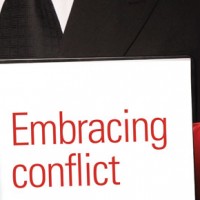
As we all know, training is one of the four pillars of a successful compliance program. The question is, how sturdy is that pillar? As training day slips into the past, does your organization retain the awareness, knowledge, abilities and motivation to fully support your compliance efforts? Does it remain effective at all levels from the executive suite down to your frontline personnel who have daily customer contact?
The fact is that effective Bank Secrecy Act/anti-money laundering (BSA/AML) compliance training is not an annual or quarterly event. In fact, to be truly effective, it is not an event at all but part of your organization's working consciousness. That means it needs to be supported by a carefully constructed flow of pervasive, persuasive and persistent compliance messages. Ongoing delivery of the compliance message is key. No matter how good your training is, as training day becomes a memory, the focus on AML concepts, procedures and significance can become weaker as it is replaced with other priorities and competing messages. So the challenge here is after training day, how do you keep compliance in the minds and actions of your organization the other 364 days of the year?
The challenge is to find ways to reach all levels of your organization without either getting lost in the noise of the business environment or being tuned out because the message is too heavy handed. The keys to success are the relevance of the message, the diversity of its format and the frequency of its delivery. An effective, ongoing training support program must reach its audience with information they need to do their jobs and stay compliant. If a training support message does not resonate with a person they will tune it out. It also needs to avoid becoming boring or annoying to prevent indifference or even resentment. Lastly, it must be an integral part of the workday — sometimes overt, sometimes subtle, but always there.
It would be very convenient if one could have a step-by-step guide on how to accomplish this intimidating task. However, the challenges to accomplishing the optimum training support program are often numerous, diverse and sometimes daunting. Many compliance officers will tell you that they are lucky to reach people with the annual AML training given the stress of the workplace or the demands of other important training efforts. Also, an organization's environment, culture, rules (both formal and informal) and underlying personality can have a significant impact on any effort to keep compliance in the minds of everyone. The size and reach of an organization also play a major role in determining what is possible and, more important, what is effective. A community bank with a few branches, a nationwide retail business and an international money services business all have unique constraints, but also potentially unique opportunities. For example, it is easier to use a more personal touch in delivering the compliance message at a local organization that could include frequent interaction with the employees. On the other hand, a much larger organization may have powerful technologies and communication capabilities to reach a worldwide audience.
Obviously, there is no one-size-fits-all solution to creating and delivering effective supplemental training and training support efforts. With this in mind, what follows is a compendium of possibilities, suggestions, ideas and best practices to keep the compliance message in front of your organization year-round. Some of them are ways to deliver the compliance message and some are possible ways to make the training better. Some may already be in place, but could be enhanced. Some may not be possible but could give birth to an approach that meets the need. Some may be a perfect fit. The point is that annual training alone is not sufficient to support a successful compliance program. Here are some thoughts on what to do the other 364 days of the year.
Improve your training by involving your trainees: By seeking feedback and active involvement, you are reinforcing the message and spreading it as employees talk about it with their workmates. Also, it is an excellent way to make sure your training is doing what it needs to do.
- Conduct focus groups — Whether it is off the shelf training or training developed internally, always test it with the target audience before you use it. What works with one group may not work at all with others. Focus groups will also generate peer group discussions.
- Use peer communications in addition to formal training efforts — have messages come directly from within a specific audience. For example: teller to teller, manager to manager, or executive to executive. People are used to being told what to do by their bosses. Hearing the same message from a trusted and respected co-worker can be more effective.
- Solicit employee feedback on existing annual training to incorporate actual scenarios or relevant experiences into future training. This is outside of focus groups and can come in the form of surveys or one-on-one conversations.
Cover the senses: Like good advertising, effective training support tools can be entertaining, educational or elicit emotional responses. The messages are short, to the point and relevant to the audience. They can be subtle like a soda can or obvious car brand in a movie (product placement) or overt like a sports event commercial.
- Short, entertaining, single message videos delivered via computers or mobile devices
- Visual aids like posters, cartoons, signs, displays and artwork
- Screen savers with compliance messages
- Employee giveaways with compliance messages like coffee mugs, pens or mouse pads.
Social networking tools: Today no training support effort is complete without the use of social media tools. The availability and appropriate use of these tools are sometimes determined by company policies, workforce demographics, available technologies and employee acceptance. They may not be the perfect tool for reaching your entire target workforce, but they are effective and efficient in reaching an increasingly networked world. Word of caution: social media is a two-way street. Your messages can elicit feedback, some of which may not be easy to digest. On the other hand, many organizations effectively use social networking to feel the pulse of their workforce. For an effective compliance program, feedback like that can be invaluable. Work with your organization's management, communication and legal teams to create effective social media use policies and procedures in the compliance environment.
- Twitter feeds — short immediate messages on breaking news like regulatory actions, internal compliance success and best
practices. - Blogs — A great way to share compliance thoughts, experiences, successes and background information with employees.
- Social media sites — There are plenty of social media sites that businesses use
to communicate internally and externally.
A well-administered, compliance-oriented, controlled membership group on one of these sites could be a great way to stay in touch with employees. One last word of wisdom: Information on the Internet, even in a closed group, is almost the same as public knowledge. Prepare and monitor your content closely.
Champion programs: This idea can be part of an effective peer-to-peer communication effort. Compliance officers sometimes have the challenge of being heard within a key compliance audience. By cultivating a champion of the compliance cause within a particular group can help spread the word, overcome resistance and provide valuable feedback. The perfect Compliance Champion has the ear of his or her peers; is fully onboard with all aspects of the compliance program; is very compliance-knowledgeable and up-to-date on your organization's compliance responsibilities, policies and procedures; is articulate and respected; and is willing to take on the responsibility of promoting the compliance effort.
- Publicize the Champion where appropriate so that those within the peer group see them as a resource for day-to-day compliance issues or as a conduit to the compliance officer.
- Provide the Champion with supplemental training so that he or she can fully understand how the compliance activities within his or her group fit into the bigger compliance picture.
- Give your Champion a recognizable title or badge to help brand the compliance effort and reinforce how seriously your organization takes its compliance responsibilities.
Recognition programs: It is a simple fact that employees appreciate recognition for a job well done. They also like raises, perks and bonuses, but that may not be possible. However, a public thank you or award for excellence, innovation or support for the compliance effort could be useful in keeping it in people's minds. Awards and public kudos could be given for:
- Perfect scores on post-training tests
- A great idea for a new or improved compliance procedure
- Being instrumental in providing critical information that identified, mitigated or prevented a risky situation
- Peer appreciation of an employee's help in meeting compliance requirements (See Champions program)
Use resources from the compliance community: Familiarity can breed contempt as the saying goes. It at least can often lead to complacency if your compliance messages are constantly from the same sources. If insight or advice comes from an external subject-matter expert it can often generate added interest and attention to internal compliance programs. Whether it is a quote, an article or an in-person presentation, integrate outside experts into ongoing training support efforts. One thing to remember is to make sure the message is audience appropriate. For example, executives will want to hear about their responsibilities or regulatory actions involving other executives. Frontline personnel may find that interesting, but if it does not apply to their daily work, it will likely not resonate and enhance their own compliance activities. Possible outside experts to use in reinforcing the compliance message:
- Law enforcement — Everybody likes to hear about the bad guys getting caught. It helps reinforce why they are doing this.
- Regulators — Any regulator who can bring clarity to the complexity of AML laws is a benefit to all. Understanding exactly what needs to be done, why it needs to be done and how it needs to be done from the source of the regulation is a real help to any compliance program.
- Compliance officers from other organizations with highly successful compliance programs — Seeing how another organization goes about its compliance responsibilities can be enlightening and inspiring.
- Reformed money launderers — There is nothing like hearing it from the side of those who are committing the crime. Almost always elicits gasps or head shaking from the audience. Check with law enforcement for possible candidates. For those that do not think this is effective check out the cyber security speaker and author circuit. Knowing your customer is critical, but knowing your enemy is eye-opening.
These are just some ideas that could help keep AML compliance and effectiveness at the forefront of your organization's consciousness. Every situation is different and requires fine tuning of techniques and approaches. However, from top to bottom, the law requires awareness, support and involvement with compliance programs. It is a key issue with many regulators and auditors. By instituting a constant and consistent program of training support activities, the chances of awareness and implementation of any compliance program grows significantly.
At a minimum, AML training is a mandatory annual event. It is a checkbox on the compliance requirements. It is required for all levels of an organization. But annual events can quickly fade from memory as other influences take the spotlight. Sales, relevant and not-so relevant regulations, workplace behavior, safety, business development are all vying for employees' attention. AML compliance cannot afford to be forgotten or lost in the mix. Annual training is guaranteed. Yet, what is done the other 364 days of the year is often the difference between compliance success and failure.
A Week in the Life of a Well-Trained, BSA-Regulated Organization
Monday
All employees, from the CEO to the new account representative, logon to the internal network and a message (could be text, a short flash video or a graphic) pops up reminding them of key compliance responsibilities.
Tuesday
A relatively new teller goes to a senior teller, whom he knows is the group's designated AML expert, to get advice on a transaction that "isn't quite right." The senior teller, prepared for questions like this through experience and extra training, gives a correct answer that also helps the new teller see the entire context of the transaction and understand the suspicious aspects that need to be reported.
Wednesday
An account manager receives recognition (maybe a plaque, a gift card or an extra vacation day) in a little ceremony before business hours for the discovery of a PEP as the ultimate beneficiary of some new business. Not only is the manager praised in front of peers and superiors, but his/her investigation is described so that others can learn from the experience.
Thursday
The new compliance posters arrive at all branches and offices. They are attractive, to the point and reinforce a compliance best practice. Somebody mentioned that he saw them outside of the CEO's office at the company's HQ. The compliance officer likely dropped it off during a planning meeting on the quarterly compliance support message from corporate leadership.
Friday
The compliance officer has his/her monthly meeting with a group of frontline personnel to see if there are any trends in suspicious transactions and to get feedback on a number of things ranging from current compliance training to ideas for making company AML policies and procedures better or most efficient.
Saturday
While watching their kids soccer match two co-workers discuss, one in IT and the other in retail, possible enhancement to the automated internal reporting system. They do this because their organization strongly encourages sharing information across functional divides for the purpose of making their compliance program better integrated and therefore stronger. This brief casual conversation is the birth of a cross-functional team whose work ends up creating a more accurate and timely compliance-related reporting mechanism.
Sunday
After the kids are put to bed and the weekend family chores are done, a branch manager finally has a few moments to read the compliance officer's blog. Even though it is not mandatory to do so, he/she knows that the blog often covers other financial scams like ATM skimming that can help protect the manager's personal finances as well as discuss recent regulatory actions.










